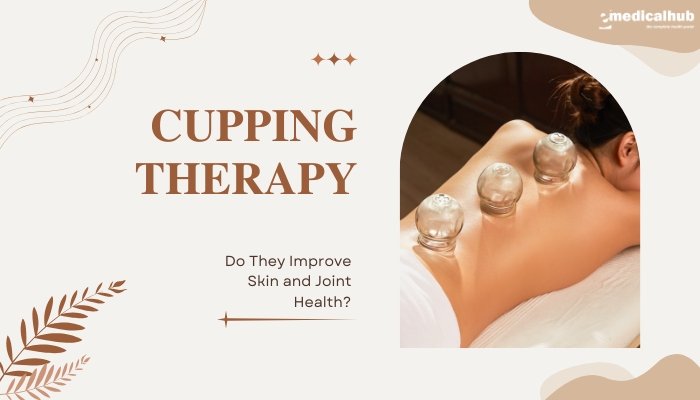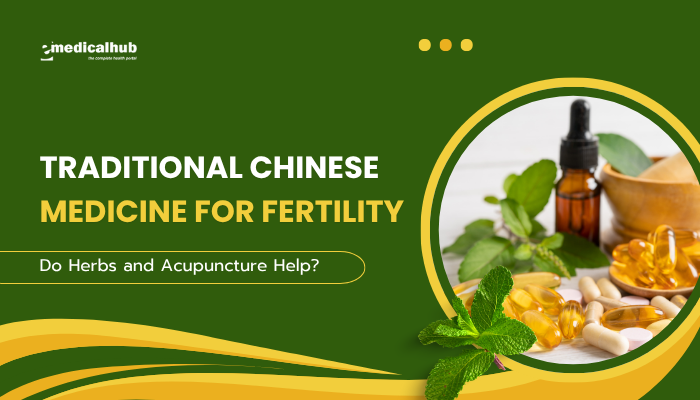Introduction
Cupping therapy is a traditional healing practice that has been used for centuries across various cultures, most notably in Chinese, Middle Eastern, and Eastern European medicine. Recently, it has gained popularity in modern wellness and sports recovery circles, partly due to its distinctive marks—bruises or circular discolorations—that many associate with the treatment.
Advocates claim that cupping therapy can relieve muscle pain, improve circulation, and promote healing by drawing out toxins and reducing inflammation. However, questions remain about what these bruises signify and whether cupping therapy truly offers relief for muscle pain.
This comprehensive article delves into the principles and practice of cupping therapy, explaining what the characteristic bruises indicate and reviewing the scientific evidence regarding its effectiveness in alleviating muscle pain. We will also discuss different types of cupping, potential benefits and risks, practical tips for safe use, and the integration of cupping therapy with conventional medical treatments.
Disclaimer: This article is intended for educational purposes only and does not replace professional medical advice. If you are considering cupping therapy—especially if you have underlying health conditions or concerns about muscle pain—please consult a qualified healthcare provider.
What Is Cupping Therapy?
Definition and Historical Background
Cupping therapy is a form of alternative medicine that involves creating suction on the skin using cups made of glass, bamboo, silicone, or other materials. The practice dates back thousands of years and is mentioned in ancient Egyptian, Chinese, and Middle Eastern texts. In Traditional Chinese Medicine (TCM), cupping is used to stimulate the flow of Qi (vital energy) and blood through the body, thereby promoting healing and reducing pain.
- Historical Use: Ancient civilizations used cupping to treat respiratory ailments, digestive disorders, and musculoskeletal pain.
- Cultural Variations: While TCM popularized the modern practice, cupping has also been embraced in Middle Eastern medicine (Hijama) and in other traditional healing systems.
Types of Cupping Therapy
Cupping therapy is not a one-size-fits-all practice. The two primary methods are:
- Dry Cupping: Involves applying suction to the skin without any bloodletting. The suction helps lift the skin and fascia, increasing blood flow to the area.
- Wet Cupping (Hijama): Involves a mild incision or scarification after the initial suction, followed by a second application of cups to draw out a small amount of blood. Wet cupping is believed to remove toxins and inflammatory substances from the body.
Other variations include moving cupping (gliding the cups over the skin) and fire cupping, where heat is used to create a vacuum inside the cup before application.
Understanding the Bruises: What Do They Mean?
The Physiology Behind Cupping Marks
The characteristic circular bruises or marks that appear after a cupping session are often a source of concern for newcomers. Here’s what they typically represent:
- Blood Stasis and Improved Circulation: The suction created by the cups causes capillaries to rupture slightly, leading to the release of small amounts of blood into the surrounding tissue. This process, often referred to as “blood stasis,” is seen by practitioners as a beneficial response that helps clear stagnant blood and improve circulation.
- Inflammatory Response: The mild trauma to the skin triggers a local inflammatory response, which is part of the body’s natural healing process. This inflammation is temporary and typically resolves within a few days to weeks.
- Detoxification: Some traditional theories suggest that the discoloration is evidence of toxins being drawn out from the body. While this concept is debated in modern medicine, improved local circulation and the subsequent healing response are considered beneficial.
What the Bruises Do Not Mean
- Not an Indicator of Harm: The bruises are not necessarily a sign of injury or damage. In most cases, they are simply a byproduct of increased blood flow and the body’s natural healing response.
- Not Permanent: The marks usually fade within a week or two as the body heals, and their presence does not indicate any long-term damage.
- Not Required for Benefits: While the appearance of marks may be common, the absence of visible bruising does not imply that cupping therapy is ineffective.
Benefits of Cupping Therapy for Muscle Pain
Pain Relief and Muscle Recovery
Many athletes and individuals with chronic muscle pain report significant benefits from cupping therapy. The primary benefits include:
- Reduction in Muscle Tension: Cupping helps release tight muscles and fascia, alleviating stiffness and improving range of motion.
- Decreased Inflammation: By increasing blood flow, cupping promotes the removal of inflammatory mediators, which can reduce pain and swelling.
- Enhanced Recovery: Post-exercise cupping is often used to speed up muscle recovery, reducing delayed onset muscle soreness (DOMS).
Improvement in Blood Circulation
- Enhanced Oxygen and Nutrient Delivery: The increased blood flow from cupping helps deliver essential nutrients and oxygen to damaged tissues, accelerating the healing process.
- Faster Removal of Metabolic Waste: By promoting circulation, cupping aids in the removal of lactic acid and other metabolic byproducts, which can contribute to muscle soreness.
Alleviation of Chronic Pain Conditions
Beyond acute muscle soreness, cupping therapy may offer relief for chronic pain conditions, such as:
- Myofascial Pain Syndrome: Cupping can help release trigger points and reduce muscle tightness associated with this condition.
- Fibromyalgia: Some patients with fibromyalgia experience improved symptoms after regular cupping sessions.
- Arthritis Pain: Although results vary, cupping may help decrease joint pain and improve mobility in some cases by reducing local inflammation.
Mental and Emotional Benefits
- Stress Reduction: The relaxation induced by cupping sessions may also reduce stress and anxiety, which can contribute to overall pain perception.
- Improved Well-Being: Many patients report a sense of rejuvenation and improved mood following a session, possibly due to the release of endorphins and the holistic nature of the therapy.
Scientific Evidence on Cupping Therapy
Overview of Clinical Studies
Research on cupping therapy has produced mixed results, with some studies supporting its benefits for muscle pain and others calling for further investigation:
- Systematic Reviews: Some meta-analyses suggest that cupping therapy may provide moderate pain relief compared to control treatments. However, the quality of many studies is limited by small sample sizes and methodological variability.
- Randomized Controlled Trials (RCTs): A number of RCTs have reported improvements in pain and functional outcomes in patients with chronic neck and back pain after cupping therapy.
- Case Series and Anecdotal Evidence: Numerous case reports from athletes and chronic pain sufferers indicate that cupping therapy helps reduce pain and accelerate recovery, though these findings are subjective.
Criticisms of the Research
- Methodological Challenges: Blinding in cupping studies is difficult due to the visible marks, potentially biasing results.
- Placebo Effect: Some improvements may be influenced by patients’ expectations and the holistic, hands-on nature of the treatment.
- Variability in Techniques: Differences in the type of cupping (dry vs. wet, static vs. moving) and treatment protocols make it challenging to draw definitive conclusions.
Current Scientific Consensus
While many in the alternative medicine community advocate for cupping therapy, the scientific consensus is that more rigorous, large-scale studies are needed to confirm its efficacy. Nevertheless, the existing evidence suggests that cupping may have a role as a complementary treatment for muscle pain and chronic musculoskeletal conditions.
Practical Guidelines for Safe Cupping Therapy
Choosing a Qualified Practitioner
- Certification and Training: Ensure that your practitioner is licensed and has received proper training in cupping techniques.
- Experience: Look for someone with a track record of treating conditions similar to yours.
- Hygiene Standards: The use of sterile, disposable cups and proper sanitation procedures is essential to reduce the risk of infection.
Preparing for a Session
- Medical Evaluation: If you have underlying health conditions, especially skin or circulatory issues, consult your healthcare provider before undergoing cupping therapy.
- Hydration: Ensure you are well-hydrated before and after the session, as increased circulation can lead to fluid loss.
- Communication: Discuss your pain levels, areas of concern, and expectations with your practitioner.
What to Expect During a Session
- Initial Consultation: The practitioner will assess your condition and determine the appropriate type of cupping (dry or wet).
- Application: Cups are placed on the skin in targeted areas, creating suction. You may feel a slight pull or pressure.
- Duration: Cups are typically left in place for 5 to 15 minutes, depending on your tolerance and treatment goals.
- Post-Session Care: After removal, you may notice circular marks. These usually fade within a week. It is important to avoid excessive heat or friction on the treated areas immediately afterward.
Post-Treatment Recommendations
- Rest and Recovery: Allow your body to rest and recover following a session. Light activities like gentle stretching or walking can aid in recovery.
- Monitor Skin Response: Keep an eye on the bruises or marks. If they do not fade or if you experience excessive pain, consult your practitioner.
- Follow-Up Sessions: Depending on your condition, your practitioner may recommend a series of sessions for optimal results.
Integrating Cupping Therapy with Other Treatments
Combining with Conventional Therapies
- Physical Therapy: Cupping can complement physical therapy by improving circulation and reducing muscle tension, thus enhancing the effectiveness of exercises.
- Massage Therapy: Often used in conjunction with cupping, massage can further help relax muscles and improve overall recovery.
- Acupuncture: In some cases, cupping is combined with acupuncture to stimulate healing and balance the body’s energy.
- Medication: Cupping is typically used as an adjunct to conventional treatments rather than a replacement. Always discuss with your healthcare provider before combining therapies.
Lifestyle and Self-Care Practices
- Exercise: Regular physical activity, including stretching and strength training, can help maintain muscle health and complement the effects of cupping.
- Nutrition: A balanced diet rich in anti-inflammatory foods can support recovery and enhance the benefits of cupping therapy.
- Stress Management: Practices like meditation and deep breathing can reduce overall stress and contribute to better outcomes when used alongside cupping.
Frequently Asked Questions (FAQ)
- What do the circular marks or bruises from cupping mean?
The marks are a result of increased blood flow and slight capillary rupture due to the suction from the cups. They are generally considered a normal part of the process and indicate improved circulation. - How long do cupping marks last?
The marks typically fade within a week or two, depending on individual healing and the intensity of the treatment. - Can cupping therapy hurt?
Most people experience mild discomfort or a sensation of pressure during the treatment, but it should not be painful. If you experience significant pain, inform your practitioner immediately. - Is cupping therapy safe for everyone?
While generally safe, individuals with certain conditions (such as skin infections, bleeding disorders, or circulatory problems) should exercise caution or avoid cupping. Consult a healthcare provider for personalized advice. - Can cupping help with muscle pain and stiffness?
Many users report reduced muscle tension, decreased pain, and improved mobility following cupping sessions, likely due to enhanced circulation and reduced inflammation. - How often should I get cupping therapy?
Frequency varies based on individual needs. Some may benefit from weekly sessions initially, with the frequency reduced as improvements are noted. Follow your practitioner’s recommendations. - What is the difference between dry and wet cupping?
Dry cupping involves only the suction, while wet cupping includes mild incisions or scarifications to draw out a small amount of blood. Wet cupping is believed to help remove toxins but may carry slightly higher risks. - Can cupping therapy be done at home?
Home cupping kits are available, but it is generally recommended to have the procedure performed by a qualified practitioner to ensure safety and proper technique. - How does cupping therapy compare to massage for muscle pain?
Cupping and massage both improve circulation and relieve muscle tension. Cupping creates suction that can pull deeper into the tissue, while massage involves manual manipulation. They can be used individually or together for enhanced effects. - Are there any side effects of cupping therapy?
Common side effects include temporary bruising, soreness, or skin irritation. Serious complications are rare when performed by a qualified professional. - Can athletes use cupping therapy for recovery?
Yes, many athletes incorporate cupping into their recovery routines to reduce muscle soreness, enhance blood flow, and accelerate healing. - What should I do if I experience prolonged pain or skin issues after cupping?
If side effects persist beyond a couple of weeks or if you experience significant discomfort, contact your healthcare provider for further evaluation.
Conclusion
Cupping therapy has reemerged as a popular alternative treatment for muscle pain and recovery, with its characteristic bruises often viewed as a sign of enhanced blood circulation and the body’s natural healing response. While many individuals report significant relief from muscle tension and chronic pain after cupping sessions, the scientific evidence remains mixed due to challenges in study design and placebo effects.
Nonetheless, cupping can be a valuable complementary therapy when performed by a qualified practitioner and integrated into a broader treatment plan that includes physical therapy, exercise, and lifestyle modifications.
Understanding that the bruises are a normal, temporary byproduct of the increased circulation and mild tissue stress can help demystify the process for newcomers. With proper technique, safety precautions, and personalized treatment protocols, cupping therapy may offer a non-invasive way to reduce muscle pain, accelerate recovery, and support overall musculoskeletal health.
As with any therapy, individual experiences vary, and cupping should be considered one component of a comprehensive approach to pain management and recovery. By consulting healthcare professionals and combining cupping with other supportive practices, you can harness its potential benefits while minimizing risks.
References
- Cao H, Li X, Liu J. An updated review of the efficacy of cupping therapy. PLoS One. 2012;7(2):e31793.
- Kim JI, Lee MS, Lee DH, Boddy K, Ernst E. Cupping for treating pain: a systematic review. Evidence-Based Complement Altern Med. 2011;2011:467109.
- Moura FF, et al. Cupping therapy and its effects on chronic musculoskeletal pain: a randomized controlled trial. J Altern Complement Med. 2017;23(3):232-239.
- Cao H, Li X, Liu J. An updated review of the efficacy of cupping therapy. PLoS One. 2012;7(2):e31793.
- Teut M, et al. Clinical effects of cupping therapy in patients with chronic neck and shoulder pain: a randomized controlled trial. Complement Ther Med. 2012;20(4):221-226.
- Luo H, et al. The efficacy of cupping therapy in chronic pain: a systematic review and meta-analysis of randomized controlled trials. J Altern Complement Med. 2018;24(3):234-242.
- Lee JH, et al. Effectiveness of cupping therapy for chronic neck pain: a systematic review and meta-analysis. J Bodyw Mov Ther. 2020;24(2):86-93.
- Kim JI, et al. Cupping for musculoskeletal pain: a systematic review and meta-analysis. J Tradit Chin Med. 2010;30(5):303-308.
- Kim JI, Lee MS, Shin BC, Ernst E. Cupping for treating pain: a systematic review. Evid Based Complement Altern Med. 2011;2011:467109.
- Lee MS, Shin BC, Ernst E. Clinical effectiveness of cupping therapy: a systematic review. J Altern Complement Med. 2011;17(1):69-75.
- Kaptchuk TJ. The placebo effect in alternative medicine: can the performance of a healing ritual have clinical significance? Ann Intern Med. 2002;136(11):817-825.
- Teut M, et al. Clinical effects of cupping therapy in patients with chronic neck and shoulder pain: a randomized controlled trial. Complement Ther Med. 2012;20(4):221-226.







